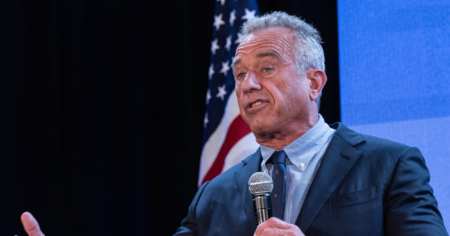As the ethanol industry seeks to decarbonize, so as to meet tax credit requirements, pipeline companies are planning to establish routes across the Midwest. Those pipelines will transport and sequester carbon dioxide (CO2) generated during ethanol production, allowing ethanol plants to take advantage of tax credits.
The Inflation Reduction Act (IRA) of 2022 expanded the 45Q tax credit.
According to documentation from the Iowa Corn Growers Association, this credit incentivizes carbon capture and sequestration (CCS), with the federal government providing funding as follows:
- $85 per metric ton (17¢ cents per gallon of ethanol) for CO2 permanently sequestered underground, and
- $60 per metric ton (12¢ cents per gallon of ethanol) for CO2 used for enhanced oil recovery or other industrial uses.
The 45Z tax credit specifically incentivizes fuel producers to lower their carbon intensity (CI) scores to 50 or lower. For on-road vehicles, 45Z offers 2¢ per gallon, up to $1 per gallon for every CI point reduction below 50. For sustainable aviation fuel, 45Z offers 3½¢ per gallon, up to $1.75 per gallon for every CI point reduction below 50.
Growing a Pipeline
The first large-scale CO2 pipeline in the U.S. was the Canyon Reef pipeline, established in the 1970s for use during the enhanced oil recovery process in the Permian Basin in Texas. Pipeline infrastructure grew to around 3,000 miles during the early 2000s. Now there are over 5,300 miles of carbon pipelines in the country, according to the U.S. Department of Transportation (DOT).
The U.S. Department of Energy estimates the country will need an increase of up to 20 times the existing carbon pipeline mileage by 2050. Several studies have attempted to optimize the required pipelines. based on varying estimates of CO2 that will need to be transported, with an estimated 30,000 to 96,000 miles of additional carbon capture and sequestration (CCS) pipelines required by 2050, according to the Department of Energy. In addition to the expansion in pipeline capacity, other modes of CO2 transportation will also be required for facilitating offshore storage, shorter routes, and collection from facilities, including barge, ship, train, and truck.
Safety Responsibilities
While carbon pipelines haven’t noted a fatality since reporting began in 1988, like any project of this magnitude, landowners and advocacy groups have voiced concerns about safety.
Monte Shaw, executive director of the Iowa Renewable Fuels Association, a trade association for ethanol producers, said confusion and political agendas have clouded the discussion around carbon pipeline safety.
“We’ve been operating CO2 pipelines in this country for 40 years, and they’ve been operating even longer in other countries,” Shaw said. “There’s never been a loss of life — you can’t say that for almost anything else — so the track record is pretty good. I have to differentiate between the people who have safety questions, and the people who use questions as a political instrument to oppose CO2 pipelines because they don’t like them.”
Congress has the ultimate responsibility to set pipeline safety regulations. The federal Department of Transportation, through its Pipeline and Hazardous Materials Safety Administration (PHMSA), is ultimately responsible for issuing and enforcing safety regulations. States are allowed to accept the responsibility for regulations within their borders with an annual certification from PHMSA. State and local governments can regulate development near pipelines with their land use authority.
Inspections are performed by the pipeline company and pipeline regulators, according to the Pipeline Safety Trust, a nonprofit public watchdog organization. Requirements for pipeline inspections vary on factors such as contents, location, and width. Some techniques include aerial flyovers, truck drive-bys, or on-foot inspections. Internal inspections are performed by a device called a “smart pig,” which travels through the pipeline, using sensors to detect corrosion, dents, scratches, and other weaknesses.
PHMSA requires pipeline companies to produce dispersion models, as well as risk analyses to identify potential impacts to high-consequence areas. Factors include topography, weather, leaked CO2 volume, and pipe diameter — while modeled at maximum, higher-than-normal operating volume. A pipeline operator must have a written integrity management program that addresses the risk on each pipeline segment, identify preventive and mitigative measures to protect each area, and continually evaluate the plan throughout the pipeline’s lifespan.
When a Burst Happens
Louisiana Ward Six Fire Department
Carbon dioxide is a colorless, odorless, heavier-than-air gas that can cause asphyxiation after prolonged exposure and is potentially lethal over wide distances. At normal temperatures, CO2 is a gas; CCS pipelines carry CO2 in highly pressurized liquid form. Natural gas pipelines are not suited for CO2 transportation. They have a maximum pressure rating of 1,480 pounds per square inch gauge (psig) — a Class 600 pipeline, according to the American National Standards Institute. A pipeline built for CO2 service is designed for 2,200 psig — a Class 900 pipeline.
When exposed to water, CO2 turns into carbonic acid, which can eat through a steel pipeline, potentially leading to a volatile rupture. When a pressurized pipeline bursts, the dramatic change of pressure at the release point can cause the CO2 to rapidly expand, causing it to drop sharply to sub-freezing temperatures, according to the American Petroleum Institute.
The cold CO2 presents a dermal hazard, causing frostbite like dry ice, to those coming into contact with the released gas or the nearby piping and equipment. It can produce a thick water vapor cloud, which may be dispersed by the wind. Due to the density of CO2, during cool and humid conditions with little to no wind, the CO2 could accumulate in lowlying areas, such as valleys and ditches. This cloud can also reduce visibility — especially at night — making driving or walking through the CO2 release hazardous. As the gas adjusts to ambient air temperatures, the opaque vapor cloud dissipates, but it may still be present.
Recent Pipeline Leaks
Yazoo County Emergency Management Agency
In February 2020, a pipeline operated by Denbury Inc. in Satartia, Mississippi, burst, spewing CO2 for about four hours before the rupture was repaired. Over 200 residents in the surrounding area were evacuated, and 45 were hospitalized, according to PHMSA’s failure investigation report, which it released May 26, 2022. Many residents experienced seizure-like symptoms, felling those affected and causing tremors and difficulty breathing. Motor vehicles stopped working, impeding emergency response. In the subsequent years, some residents have reported ongoing respiratory issues, as well as headaches, difficulty concentrating, and muscle tremors, according to a report by NPR.
In response, PHMSA in 2022 announced steps to implement new safety measures in its oversight, created the failure investigation report, and began soliciting research to strengthen CO2 pipeline safety.
In its investigation, PHMSA attributed the pipeline burst to soil saturation from recent rainfall. Vertical erosion of the sloped hillside, exacerbated by the rainfall, produced enough load to compress the pipeline and cause the welding to fail. PHMSA found that Denbury’s operations and maintenance procedures didn’t address the potential for pipeline damage caused by soil instability, and that the company’s aerial inspection patrols failed to identify the potential geohazard before the incident.
According to the PHMSA’s report, Denbury failed to notify local responders, hindering the ability of emergency services to respond in a timely manner; local responders contacted Denbury about 40 minutes after the burst. The report also found that Denbury’s CO2 dispersion model underestimated the potential affected area that could be impacted by a release, and that the modeling did not identify Satartia.
In 2022, PHMSA issued a Notice of Probable Violation, Proposed Civil Penalty, and Proposed Compliance Order to Denbury Gulf Coast Pipeline, LLC for multiple violations of Federal pipeline safety regulations, with proposed civil penalties amounting to $3,866,734. In 2025, another $2,366,900 of penalties was proposed. The final penalty assessed was $2,868,100.
In April 2024, Denbury, since acquired by ExxonMobil, was responsible for another pipeline burst in Sulphur, Louisiana. A 2-foot-diameter pipeline at a pump station ruptured and released around 107,000 gallons of CO2 over the course of nearly two and a half hours, according to the Ward Six Fire Protection District in Calcasieu Parish. Residents within a quarter mile of the pump were told to shelter in place, close doors and windows, and turn off air-conditioners. No injuries or serious illnesses were reported at the time.
Looking Forward
In the final days of President Biden’s administration, PHMSA proposed new, comprehensive requirements for CO2 and other hazardous liquid pipelines.
“I have learned first-hand from affected communities in [Sartartia,] Mississippi and across America why we need stronger CO2 pipeline safety standards,” said Tristan Brown, PHMSA deputy administrator at the time of the announcement. “These new requirements will be the strongest, most comprehensive standards for carbon dioxide transportation in the world and will set our nation on a safer path as we continue to address climate challenges.”
It was withdrawn days later when President Trump took office, and issued a sweeping order freezing all pending regulations by executive departments and agencies.
PHMSA’s proposal would have strengthened standards for CO2 pipelines — including CO2 transported in a supercritical fluid state — and establish new standards for transporting CO2 in a gaseous state via pipeline.
Pipeline regulations are in further doubt following Trump’s executive order in February that targeted regulations deemed “unconstitutional” or that would “impose significant costs upon private parties that are not outweighed by public benefits.”
Despite changes to regulations, Shaw, of the Iowa Renewable Fuels Association, said he expects the Trump administration to continue supporting carbon pipeline projects moving forward.
“Trump is the godfather of the carbon pipelines — he’s the one that signed 45Q in the law in such a way that it was actually economically viable to do these projects,” Shaw said. “Biden further enhanced 45Q in the [Inflation Reduction Act].”
In March, South Dakota banned the use of eminent domain for CCS projects. This significantly threatens the future of Summit Carbon Solutions’ proposed pipeline, which has its storage location in North Dakota. In April, the South Dakota Public Utilities Commission denied, for a second time, the permit for Summit’s pipeline route.The company said it is planning to reapply with a reduced scope.
Shaw said the ban on eminent domain is a de facto ban on the pipeline in the state and that it will hurt ethanol producers who can’t take advantage of the 45Q and 45Z tax credits for sequestering carbon.
“This isn’t part of some sort of political philosophy or political agenda: it’s business,” Shaw said. “We want to produce ultra-low carbon ethanol because we have customers who want to buy it.”


:max_bytes(150000):strip_icc()/Canadian20flag48553671412_aeb0538794_c-0bfa123de2b54e30ab4fadecae382d4a.jpg)




:max_bytes(150000):strip_icc()/ConstructiononDakotaAccessPipeline-128983ee0e3b417f8d133d12fbbf395f.jpg)


:max_bytes(150000):strip_icc()/WheatField-CloseUp-2000-bc79406da4004a2d94bcb2c32153cc3a.jpg)
:max_bytes(150000):strip_icc()/7020544KaronOlsoninshopoffice_preview-a3eff2b1e1aa4f819cb28d5eec1cac8a.jpg)
